Canada
Canada
The following Nativities are each displayed in a unique permanent setting created by Marian Library Crèche Collection volunteers. The descriptive text for each was written by Father Johann Roten, S.M.
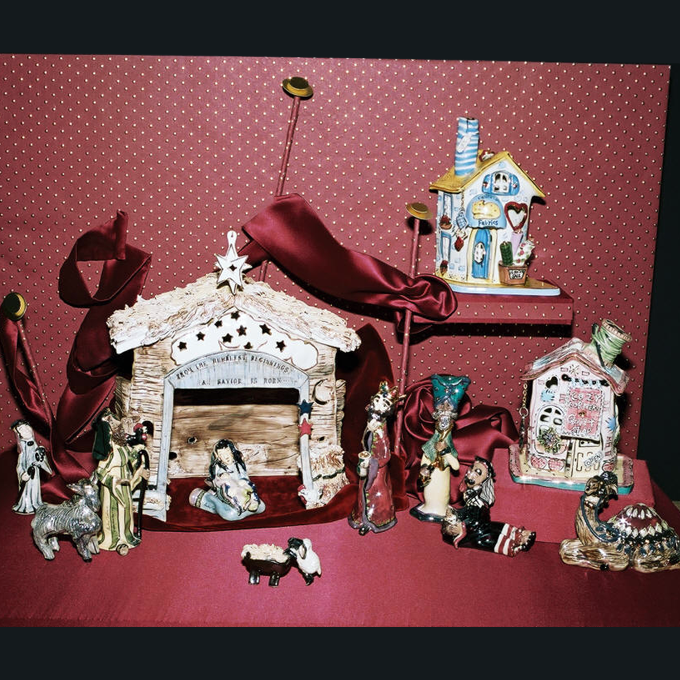
Paradise Lost?
Heather Goldminc
Tilted gingerbread houses, baroque apparels, lustrous colors, faces with big eyes that both laugh and cry, not to forget majestic animals which speak with human tongues: such are some of the ingredients of a child’s nativity set imagined by adults. Heather Goldminc’s precious ceramic nativity reflects some of the typical features of contemporary Christmas tradition. It suggests an atmosphere of faraway innocence and childlikeness, of humor and sadness, of paradise lost. There also remains the silent hope of paradise retrieved.
– ML.1115.01
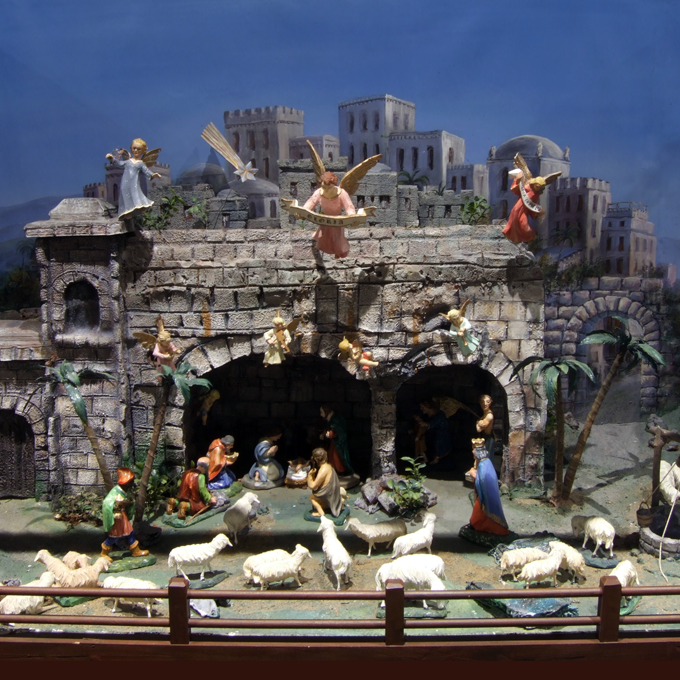
As It Was in the Beginning (Large Oriental Nativity)
John Schnegg
– Canada/Austria
The artist works in the tradition of his homeland, Tyrolia. The style is oriental, an attempt to reconstruct the nativity "as it was in the beginning." This tradition, initiated by Austrian artists at the turn of the last century, uses "near oriental" (mid- Eastern) architecture, dress, and ethnic characteristics. These are mixed in with typically Tyrolean elements, in particular the elaborate setting, the painted landscape of the Holy Land, and a host of angels in various positions and roles (Gloria angel, angels calling the shepherds, musicians, and even a guardian angel). John Schnegg is a woodcarver and the descendant of a crèche crafters dynasty known in Tyrolia since the eighteenth century. His figures, all wood carved, are patterned on the so-called peasant style. The harsh traits of the face and strong colors of the dress highlight the "ordinariness" of the Incarnation. They contrast with the smooth artistry of the figures' postures and movements.
– ML.0250.01
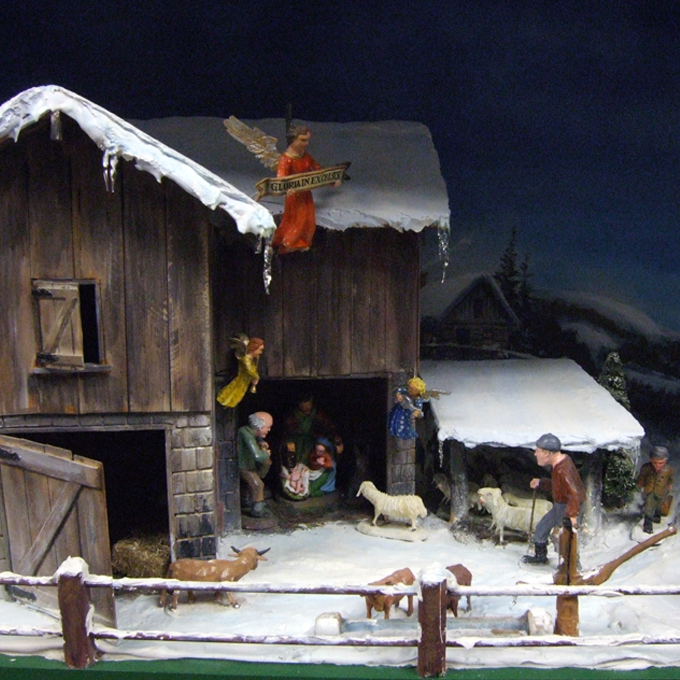
In Deep Winter
John Schnegg
This second set by John Schnegg grew out of his Canadian experience. It reflects the traditional Christmas imagery of northern countries. Icicles are hanging from the rooftops, and the landscape is buried in deep snow. We see a typical Canadian stable and barn, garage, shelter for the sheep and water pump. The Holy Family is tucked away with the animals, as if they were hiding. The meaning here is that we need to be looking and searching for Jesus our Savior. Eyes need to be open to see our salvation. But where we humans need to be seekers, animals intuitively sense the presence of wonder. This boxed-in nativity, whose wintry landscape is not painted on canvas but on a sheet of metal, is a typical house or domestic crèche. Triangular in shape or rounded in the back like our set, it is placed in one of the corners of the living room, in "God's own corner," and becomes an object of meditation during the Christmas season.
– ML.0250.02
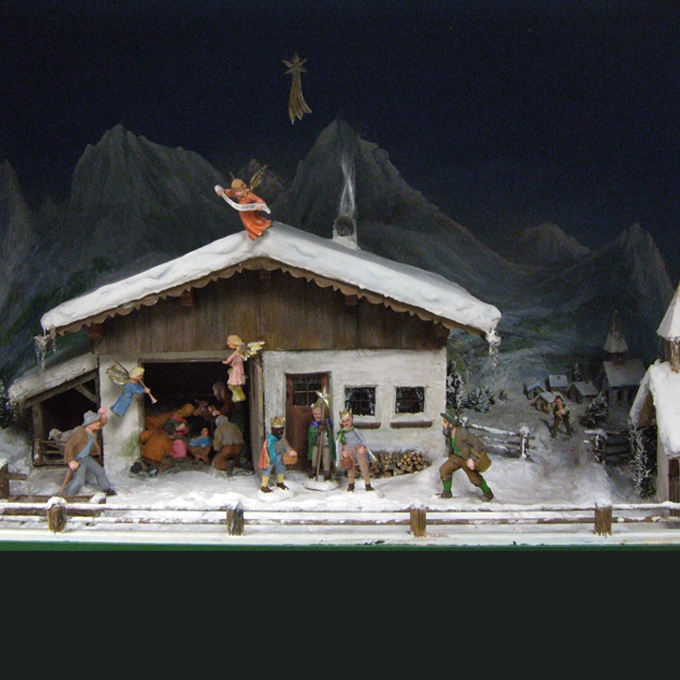
From the Tyrolean Alps
John Schnegg
The snow capped mountains, the modest farmhouse and the numerous little chapels by the wayside are typical of the Tyrolean region of Austria. John Schnegg is the descendant of a renowned woodcarver dynasty dating back to the 18th century. His figures, all wood carved, are patterned on the so called peasant style.
– ML.0250.03
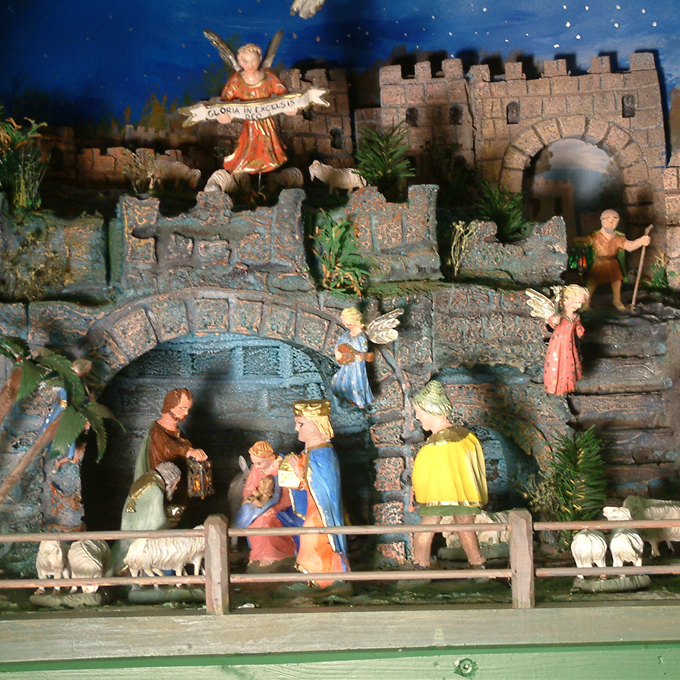
As It Was in the Beginning (Small Oriental Nativity)
John Schnegg
Schnegg has made a large and a small crèche in the Orientalist style. The big one is presented in this collection under the title, "As it was in the Beginning," reminding the onlooker that there was a period in the latter part of the 19th century and beginning 20th century when Christian religious art attempted to recreate the times of customs of Jesus' life. Thus, the name Orientalist period. As can be seen, setting and figures are similar in form and colors to those in the larger Oriental set.
– ML.0250.04
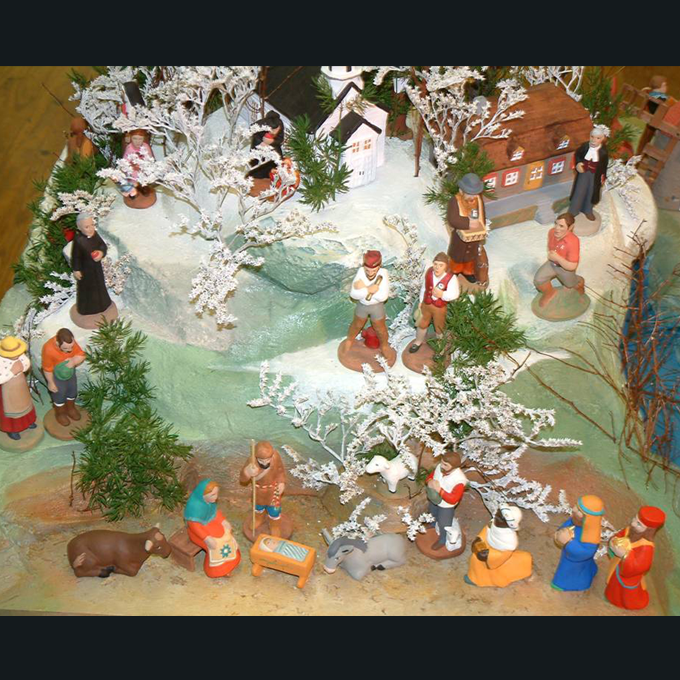
The Santons of Charlevoix
Bernard Boivin
Charlevoix in French-speaking Canada has its own collection of terra cotta figurines depicting a typical Québécois nativity scene. Its colorful characters bring back the memory of traditional activities and historical events of old Charlevoix. Scenes of farming, logging, and shipbuilding alternate with brightly colored houses, towns, and chapels. Our nativity set presents historical personages, villages, animals, folkloric and legendary characters, and of course, a beautiful local rendering of the Nativity group.
– ML.1118.12
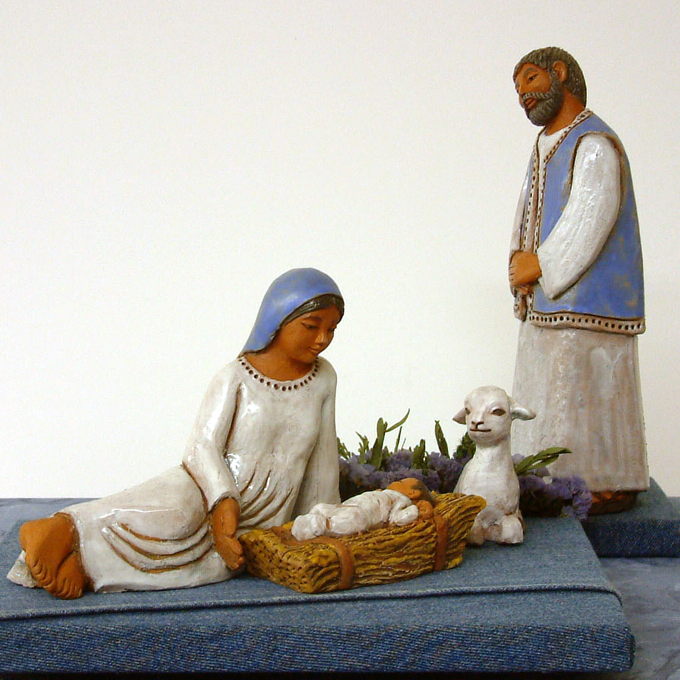
Romanesque Denim
Rose-Anne Monna
– Ceramic
Joseph wears a denim jacket and Mary's robe and veil appear to be of similar fabric. Did the holy couple finally give in to popular taste and contemporary fashion? Rose-Anne's real teachers, it is said, were the humble, anonymous and yet peerless sculptors of the 11th and 12th centuries. Her artistic sense and human experience were marked by the architects and artists of Romanesque churches and cloisters. This is manifest not only in the reclined posture of the mother, but foremost in the simple grace and loveliness of the figurines, and in the peaceful spiritual atmosphere they convey. Speaking of conveying a spiritual atmosphere: a denim jacket can be a perfect fit for the true spirit of Christmas, albeit conceived in Romanesque canons of artistic beauty.
– ML.2625
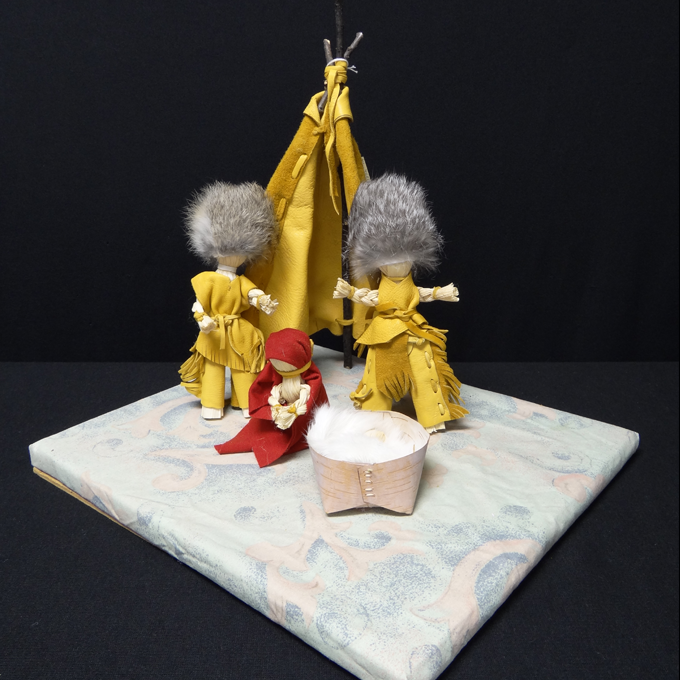
Algonquin Indian Nativity
Marie Native Crafts
– ML.4621
